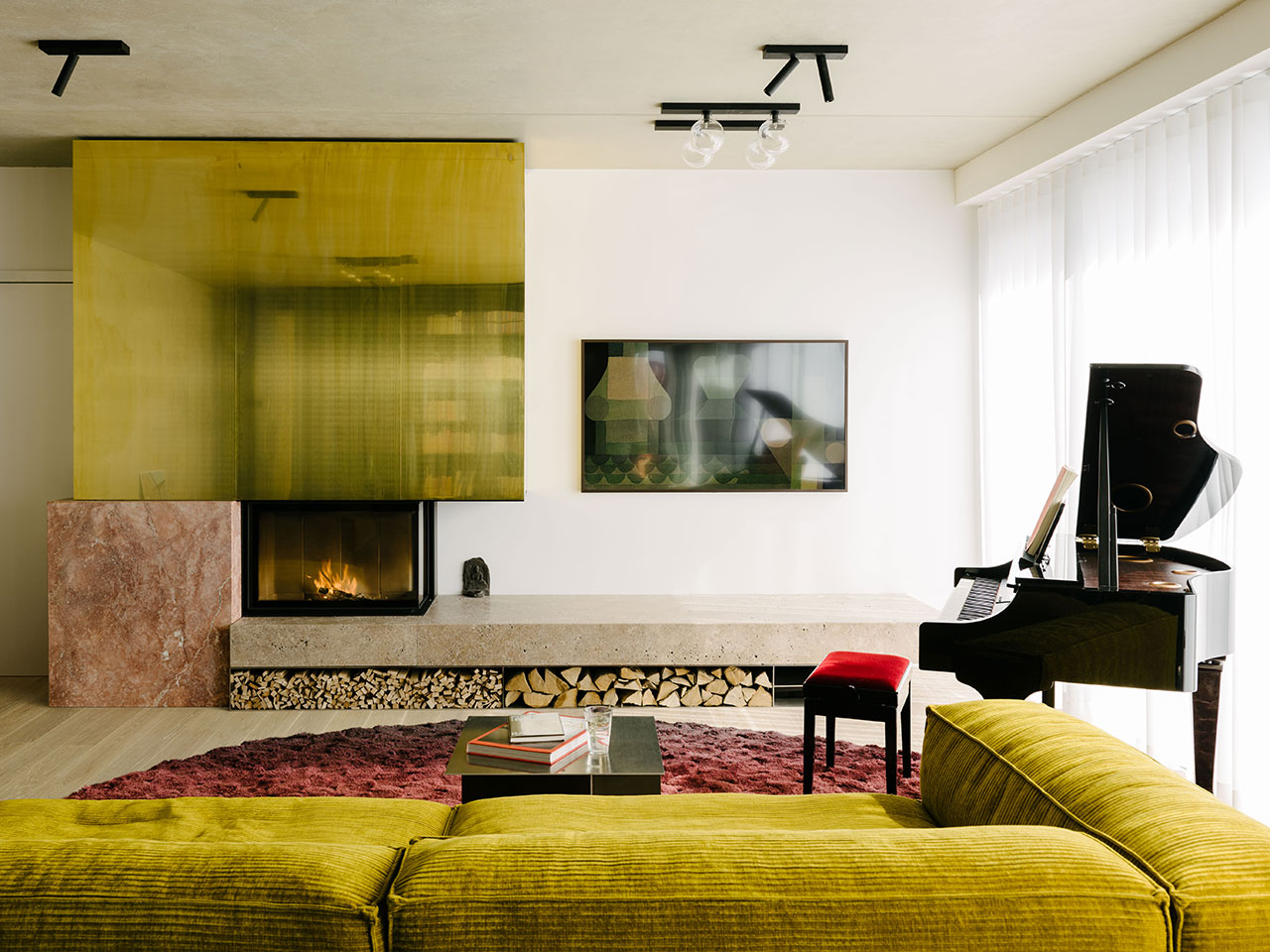Ester Bruzkus has been interested in design for as long as she can remember. When the young aesthete was 12 years old she began collecting Vogue magazine because she wanted to know what was happening in the world of fashion.
She eventually explored other creative realms, and her ninth grade art teacher’s guidance was instrumental. Trips to museums and galleries supplemented her coursework, and the instructor encouraged Bruzkus to participate in programs for talented students. When Bruzkus was 16 she had already decided to become an architect, because she wanted to make more than just objects or paintings – she was determined to create a more beautiful world.
Based in Berlin, Bruzkus founded her eponymous firm, Ester Bruzkus Architekten, in 2002, and partner (in business and life) Peter Greenberg joined her in 2016. The duo focuses on work at different scales, from residences to hotels, often decorated with furniture designed by the team. There were so many requests for those pieces that Bruzkus opened STUDIO COUCOU, an online shop with a curated selection of bespoke furnishings and favorite finds.
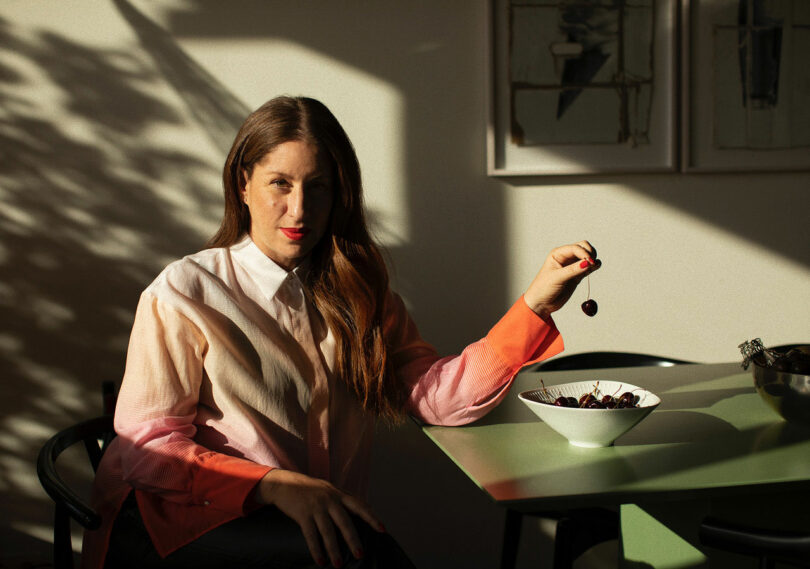
Ester Bruzkus \\\ Photo: Debora Mittelstaedt
All of these endeavors are part of a holistic approach that she discovered before she headed to university. As a German cultural representative at Disney World in Florida, Bruzkus learned about backstage operations, and more importantly, how to enhance the guest experience. It was a role that informs her work today as a designer tasked with shaping spaces. “It turns out that what I know about hospitality projects influences how we plan other projects,” says Bruzkus. “Now we make homes and offices which have some of the special feeling of the greatest hotels you’ve ever been to.”
Bruzkus and Greenberg collect images that resonate, especially when they travel. Greenberg even keeps an open source library on Instagram featuring the architecture the couple sees and talks about. For Bruzkus, who takes pictures of everything from text passages to street signs, photography is one of the most effective means of communication. “I photograph everything I see, and my photo library is my record,” she adds. “Most of the time it takes me just a few minutes to find the perfect image to describe my ideas.
Today, Ester Bruzkus joins us for Friday Five!
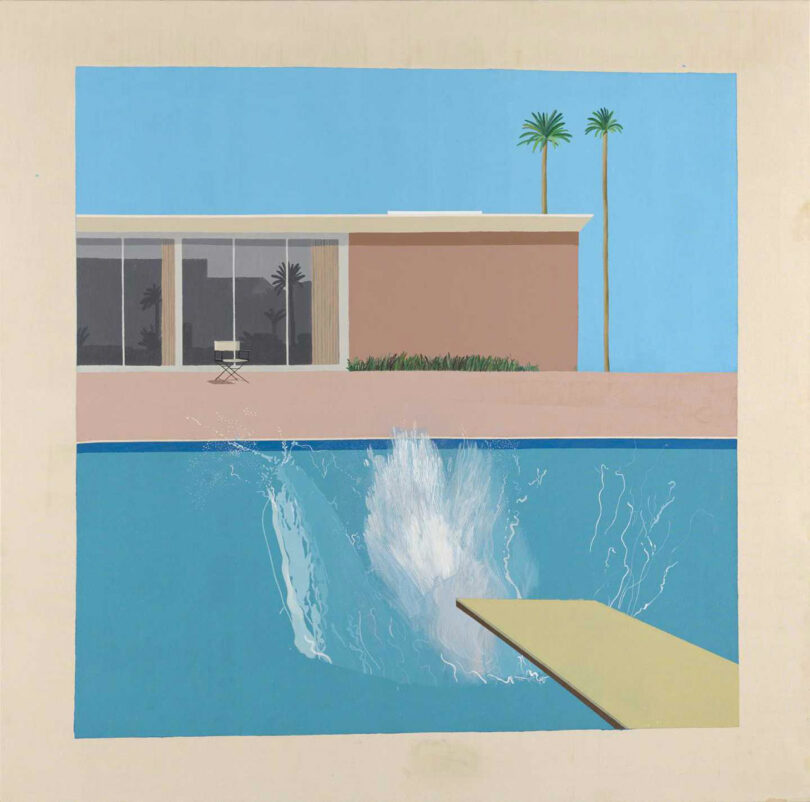
A Bigger Splash (1967) by David Hockney, Tate \\\ Photo: Courtesy of Tate © David Hockney
1. A David Hockney Pool
Jumping into the cool, still water is the best way for me to clear my mind, like in David Hockney’s “A Bigger Splash” (1967). The picture also inspired me for the work I did on the restaurant L.A. Poke Berlin that recalled the lightness of California.
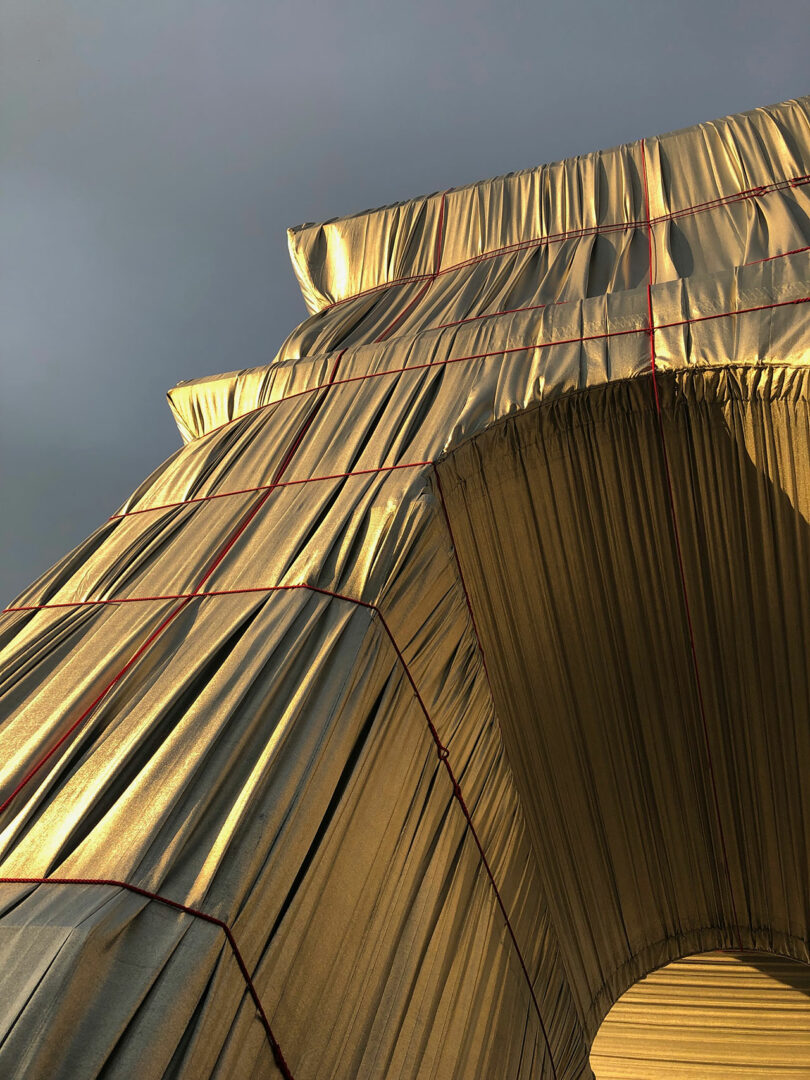
Photo: Ester Bruzkus
I loved how the light was captured in the silver material used for Christo and Jeanne-Claude’s “L’ Arc de Triomphe, Wrapped.” It was an amazing transformation of an iconic monument. I went several times during different weather conditions, and every time I was surprised and touched by the changing appearance of the fabric.
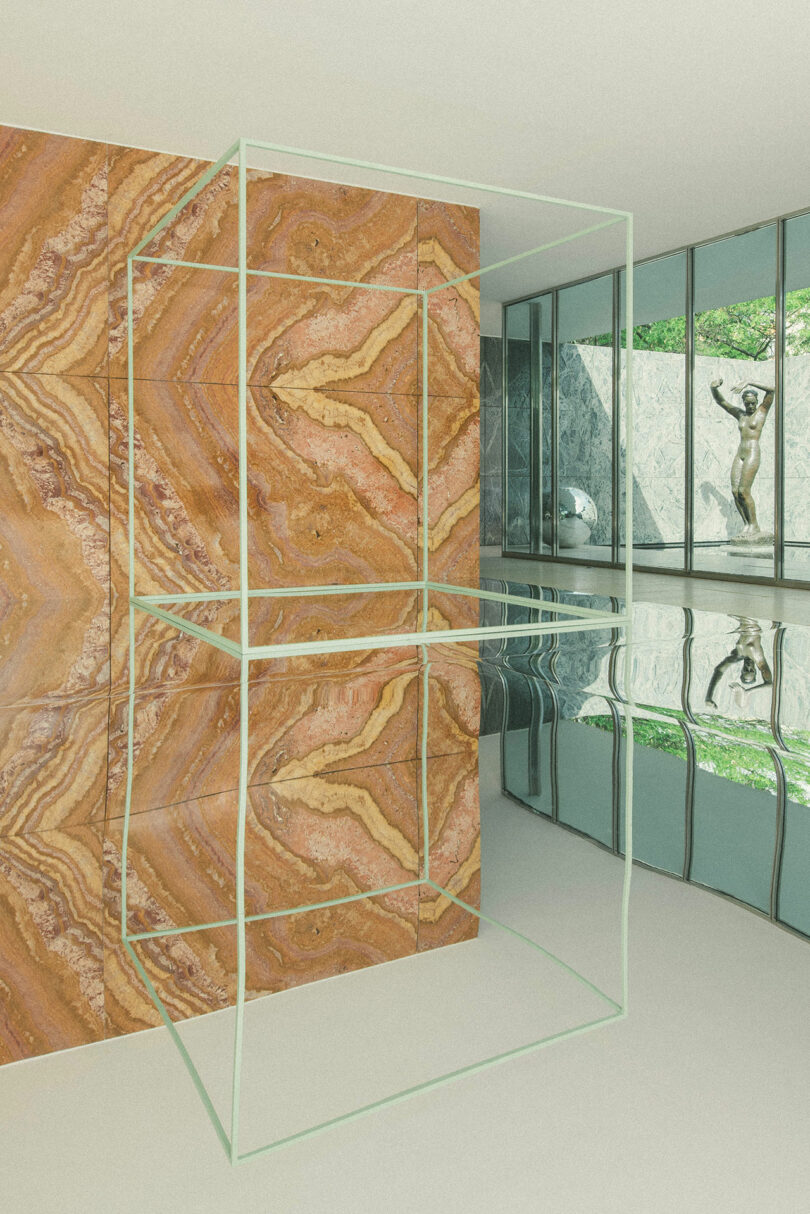
BARCELONA PAVILION INSTALLATION
For the 1929 Pavilion, Mies van der Rohe and Lilly Reich created a design that emphasized the nature and effects of the materials they used. By using reflective and transparent materials, they made a space where one can simultaneously see oneself in the reflection, see what is behind, and see what is ahead through the glass.
Peter and I had the opportunity to create an installation there, replacing the original opaque black carpet with a plane of thin reflective plexiglass panels on the floor. We also inserted three additional boxes – two with mirrored surfaces and one, a thin colored outline. We temporarily transformed the Pavilion to reinforce the reading of these doubled surfaces and the perception of expanded spaces, a kind of kaleidoscope or hall of mirrors.
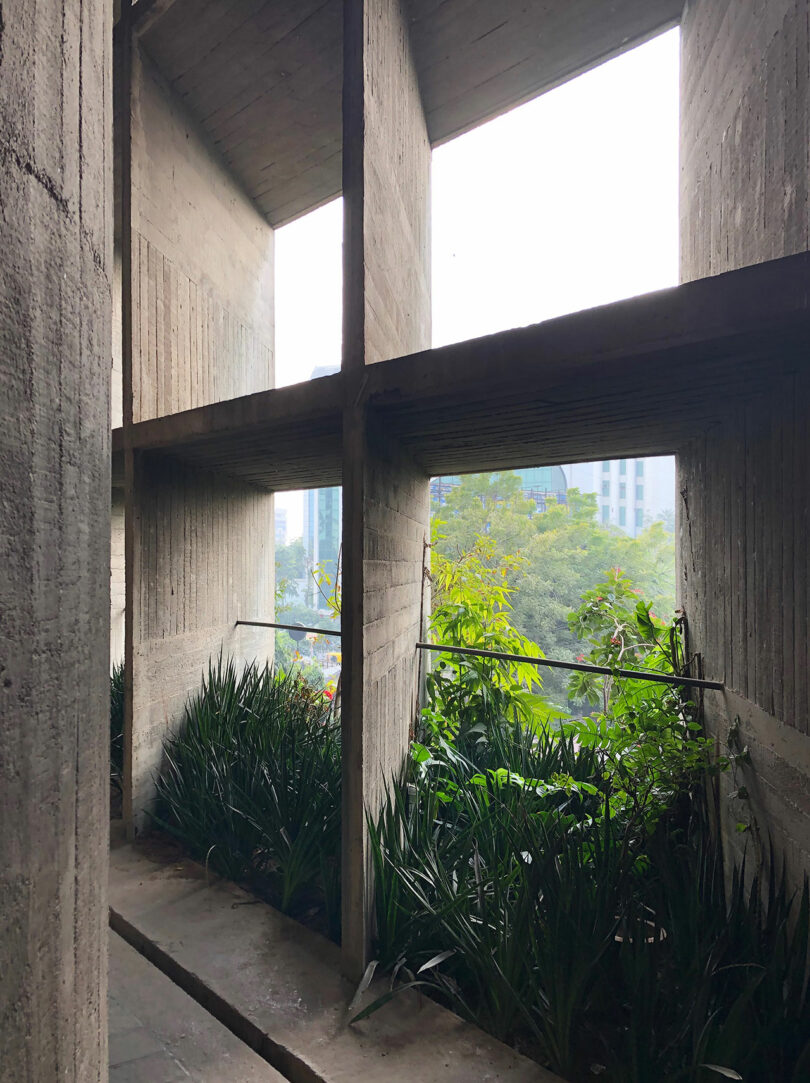
Photo: Ester Bruzkus
By Le Corbusier, this is one of the most magical and beautiful buildings I have visited. With its open facade there is a wonderful breeze flowing through the space. The contrast of the velvety looking concrete with the lush growing plants is unexpected and very unique. The experience of being inside the building is breathtaking.
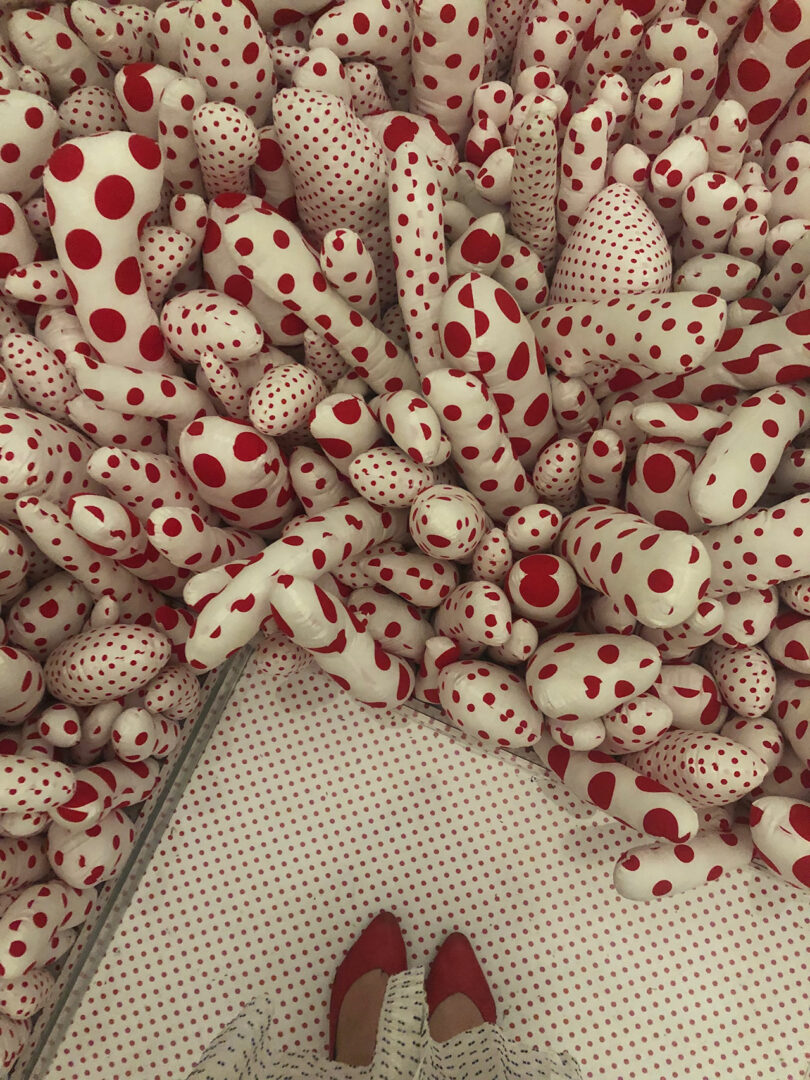
Photo: Ester Bruzkus
This is a picture I took inside the “Infinity Mirror Room-Phalli’s Field” at the Yayoi Kusama exhibition at the Gropius Bau in Berlin. I love the opulence, the repetition, and when colors happen to match perfectly. Like here in the picture, my shoes and my dress create a perfect moment of patterns and colors.
Work by Ester Bruzkus:
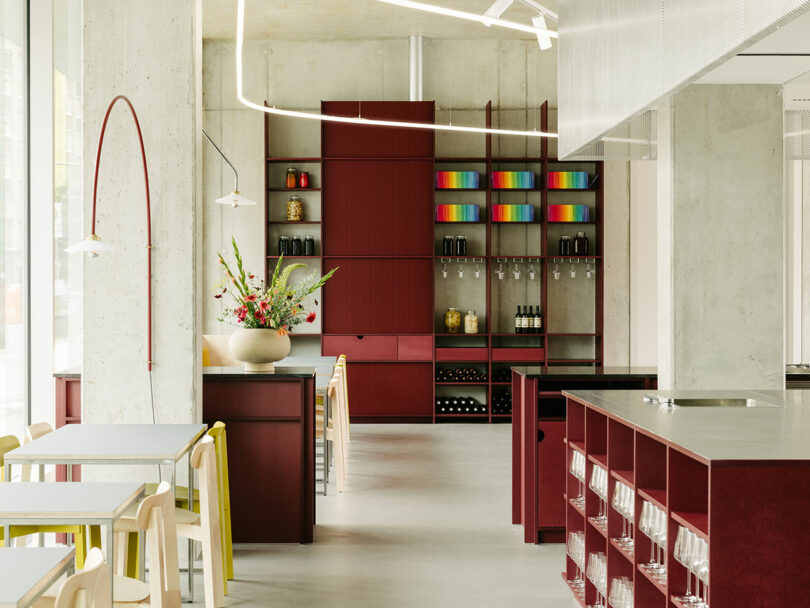
REMI Restaurant Berlin \ Ester Bruzkus Architekten approached the design of the new Berlin-Mitte restaurant REMI for chefs Lode van Zuylen and Stijn Remi by using architectural materials that are high in quality, carefully sourced and crafted, with rigorous attention to detail. This is the very approach to ingredients that the chefs bring to crafting a meal, so the success of the project results from a synergy between the architects and the chefs. The design is intended to emphasize simplicity and quality – and to enhance a dining experience that is authentic, straightforward and fun.

Photo: Jens Bösenberg
Ester’s & Peter’s Apartment Berlin \ The move from one apartment to another in the same building provided the ideal opportunity for Ester Bruzkus to revisit the identical design problem with fresh ideas (please click on “ester’s apartment” to see what she did there) . The new design – Ester’s Apartment 2.0 – is an expression of both restraint and opulence through its efficient planning, its playful use of color, its exceptional lighting, its custom-designed furniture, and its carefully detailed material volumes. The apartment feels bright and spacious like an airy open loft because its space extends from east facade to the west and sunlight enters from sunrise to sunset. It is intricately planned to offer a rich variety of spaces – and to make the most of hidden storage despite its small actual size – just 80 square meters inside.
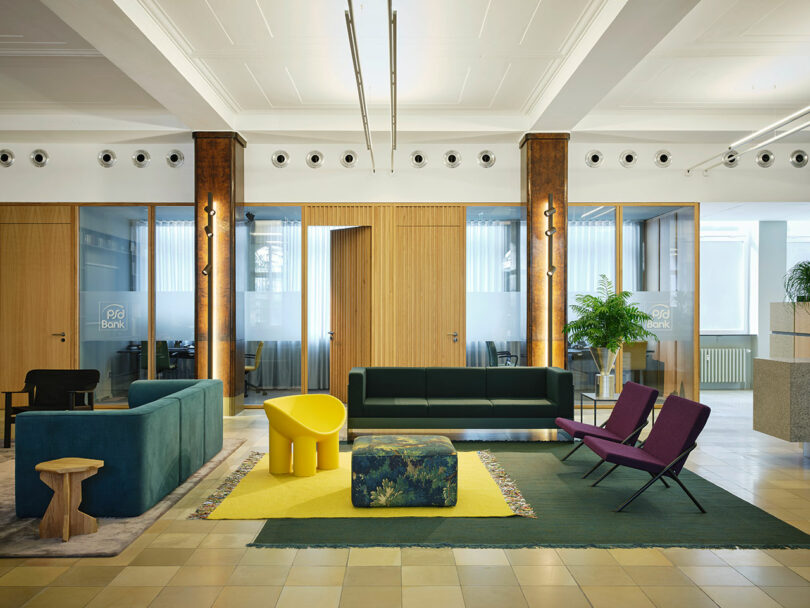
Photo: NOSHE
PSD Bank Berlin-Brandenburg eG \ Community Space & Offices, Berlin \ A Bank as a Community Living Room. Located inside a historic Post Office in Berlin- Friedenau, the design transforms the bank into a generous and welcoming neighborhood center. In addition to traditional banking services like ATMs, consulting rooms, and help desks, there are also unexpected spaces for a bank: a café, a colorful community living room, an interior garden, exhibition spaces, and public meeting rooms. While most banks are closing their brick and mortar locations, the PSD Bank has opened as a neighborhood center to welcome everyone in the community.
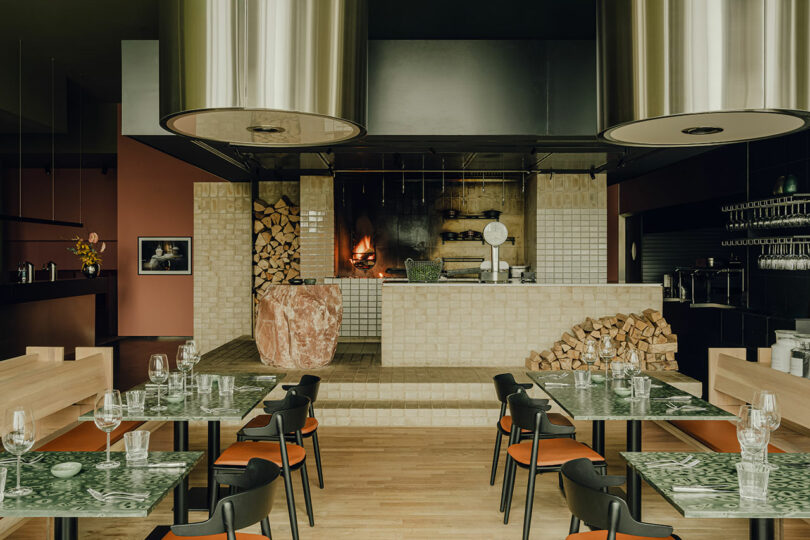
Photo: PION Studio
Beefclub “Fire+Salt” Restaurantin Wolfsburg \ Beef Club “Fire + Salt” is a radical refresh of an existing eatery in Autostadt, the automotive theme park at the headquarters of Volkswagen Group in Wolfsburg. At the center of the space is the theatrical preparation of food on a grill – and an open brick fireplace is positioned where everyone can see it, recalling an archaic fire at the center of a shared dining experience. Building materials emphasize the fire and salt of the menu – the grill is made from fired bricks; wood dining tables have been treated with salt to introduce unique colors, patterns, and textures.

